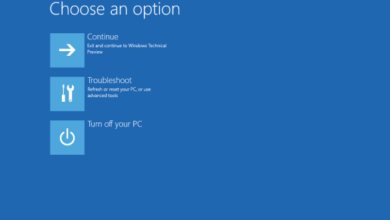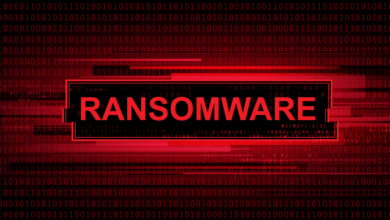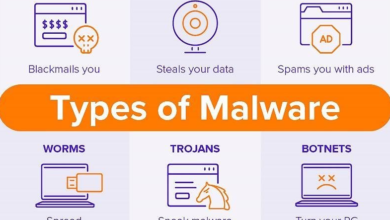Twiblocker Malware: Tips to Keep Your Account Secure

Introduction
In a world where Twiblocker malware lurks in the shadows of social media, safeguarding your digital presence has never been more crucial. Imagine waking up one morning to find your Twitter account hijacked, spewing spam, and tarnishing your online reputation. Scary, right? This insidious malware preys on unsuspecting users, spreading like wildfire and wreaking havoc on personal and professional lives. But don’t worry, there are effective ways to protect yourself. By understanding the mechanisms of Twiblocker malware, you can fortify your defenses and keep your Twitter account secure. Dive into our comprehensive guide to arm yourself with the knowledge and tools needed to outsmart these cyber villains. Ready to take control of your online security? Let’s get started!
Table of Contents
Understanding Twiblocker Malware
What is Twiblocker Malware?
Twiblocker malware is a pernicious threat designed to infiltrate and compromise Twitter accounts. This sophisticated malware operates by surreptitiously gaining access to user credentials, often through phishing scams or malicious links. Once embedded, it can hijack the account, sending out spam, stealing personal information, and even manipulating direct messages. The primary goal of Twiblocker malware is to propagate itself and exploit the infected account for various malicious activities. Its presence can be insidious, often going undetected until significant damage has been done.
Protecting yourself from Twiblocker malware involves a combination of vigilance, robust security practices, and staying informed about the latest cyber threats. Recognizing the symptoms of this malware early can prevent a cascade of detrimental effects, safeguarding both your digital identity and your peace of mind.
How Twiblocker Malware Infiltrates Twitter Accounts
Twiblocker malware infiltrates Twitter accounts through cunning and deceptive methods. One primary avenue is phishing attacks, where users are lured into clicking malicious links disguised as legitimate. These links often arrive via emails or direct messages, appearing to be from trusted sources. Once clicked, the malware is downloaded, and it begins its silent takeover. Another common method involves compromised third-party applications. Users unknowingly grant these apps access to their Twitter accounts, giving Twiblocker malware a backdoor entry.
Additionally, exploiting weak passwords and unprotected login credentials allows this malware to breach accounts effortlessly. Its presence can remain hidden, quietly siphoning data and spreading malicious content. By understanding these infiltration tactics, you can fortify your defenses against Twiblocker malware and protect your Twitter presence from its stealthy incursions. Stay vigilant, use strong passwords, and be cautious with links and apps to keep this menace at bay.
The Potential Damage of Twiblocker Malware
The potential damage of Twiblocker malware is extensive and insidious. This malicious software can hijack your Twitter account, sending out spam and phishing messages to your followers, thereby tarnishing your online reputation. Beyond public embarrassment, Twiblocker malware can also siphon off sensitive personal data, including direct messages and contact information, leading to identity theft and further security breaches. It can manipulate your account settings, follow or unfollow users without your knowledge, and even block you from accessing your own account. This can disrupt your social media presence and professional engagements.
The malware’s ability to propagate itself through your network means that your friends and followers are also at risk. The financial and emotional toll of recovering from such an attack can be significant, underscoring the importance of robust cybersecurity measures to guard against the pervasive threat of Twiblocker malware.
Recognizing the Signs of Twiblocker Malware
Unusual Account Activity
Unusual account activity is often the first red flag indicating the presence of Twiblocker malware. This can manifest in several ways. You might notice tweets you didn’t compose or retweets of content you’ve never seen. Sudden spikes in following or unfollowing users can also be a sign, as Twiblocker malware manipulates your interactions to spread its reach. Additionally, peculiar direct messages sent to your contacts, often containing suspicious links, are a common symptom. These anomalies not only compromise your account’s integrity but also put your followers at risk.
Pay close attention to login alerts from unfamiliar locations or devices, as these could indicate unauthorized access. Regularly monitoring your account for such activities is crucial. By staying vigilant, you can spot the early signs of Twiblocker malware and take swift action to secure your digital presence, ensuring your online interactions remain authentic and safe.
Unexpected Tweets and Messages
One of the most alarming signs of Twiblocker malware is the appearance of unexpected tweets and direct messages from your account. These messages often contain suspicious links or strange content that you never intended to share. Such activity can confuse and alarm your followers, damaging your online reputation. The malware’s insidious nature allows it to operate undetected, sending out these messages to propagate itself further. Your followers might click on these malicious links, inadvertently spreading the malware to their own accounts.
This ripple effect can cause widespread disruption and harm. It’s crucial to remain vigilant and regularly check your account for any activity that doesn’t align with your typical behavior. If you notice unexpected tweets or messages, act swiftly to secure your account. Change your password, revoke access to suspicious third-party apps, and enable two-factor authentication to thwart Twiblocker malware and protect your online presence.
Unauthorized Account Access Notifications
Receiving unauthorized account access notifications can be alarming, but they are crucial in detecting Twiblocker malware. These notifications alert you to suspicious login attempts from unfamiliar locations or devices. They serve as an early warning system, indicating that someone might be trying to compromise your account. If you receive such a notification, it’s imperative to act quickly. Change your password immediately and enable two-factor authentication to add an extra layer of security. Additionally, review the recent activity on your account to identify any unauthorized actions.
Twiblocker malware often exploits weak passwords and unprotected accounts, so fortifying your login credentials is essential. Regularly monitoring these notifications can help you stay ahead of potential breaches and maintain control over your digital identity. By staying vigilant and responding promptly to unauthorized access alerts, you can protect your account from the harmful effects of Twiblocker malware.
Strengthening Your Twitter Security

Setting Up a Strong Password
Setting up a strong password is your first line of defense against Twiblocker malware. A robust password is like a fortified gate, deterring unauthorized access and protecting your digital kingdom. Avoid common phrases or easily guessable information such as birthdays or simple sequences like “12345.” Instead, create a complex password that combines uppercase and lowercase letters, numbers, and special characters. For example, think of a memorable phrase and convert it into an acronym mixed with numbers and symbols. Regularly updating your password is equally important, as it minimizes the risk of long-term exposure to potential threats.
Using a password manager can help you generate and store these complex passwords securely, ensuring you don’t have to rely on memory alone. By setting up a strong password, you create a formidable barrier against Twiblocker malware, safeguarding your Twitter account from malicious incursions and ensuring your online interactions remain secure and private.
Enabling Two-Factor Authentication
Enabling two-factor authentication (2FA) is a powerful way to protect your Twitter account from Twiblocker malware. This extra layer of security requires not only your password but also a second form of verification, such as a code sent to your phone or generated by an authentication app. This means even if Twiblocker malware manages to steal your password, it can’t access your account without the second factor. Setting up 2FA is straightforward. Go to your account settings, select security, and follow the prompts to enable two-factor authentication.
Choose a method that suits you best, whether it’s SMS, an authenticator app, or a security key. This additional step might seem cumbersome, but it significantly enhances your account’s security, making it much harder for malicious actors to gain unauthorized access. By enabling two-factor authentication, you take a proactive stance against Twiblocker malware, ensuring your online interactions remain secure and your personal information stays protected.
Regularly Updating Your Password
Regularly updating your password is a crucial step in safeguarding your account from Twiblocker malware. Cyber threats evolve constantly, and a password that was secure six months ago might now be vulnerable. Changing your password periodically disrupts any unauthorized access attempts that rely on old credentials. Aim to update your password every three to six months. When you do, ensure your new password is strong and unique—avoid reusing old passwords or simple patterns. Use a mix of uppercase and lowercase letters, numbers, and special characters to create a robust defense.
This habit significantly reduces the risk of your account being compromised by Twiblocker malware. Additionally, consider using a password manager to keep track of your updated passwords securely. By integrating regular password updates into your security routine, you erect a formidable barrier against cyber intrusions, ensuring your online presence remains resilient and protected from Twiblocker malware.
Best Practices for Safe Tweeting
Avoiding Suspicious Links
Avoiding suspicious links is essential in protecting your account from Twiblocker malware. These links, often disguised as harmless messages or enticing offers, can lead to malicious websites designed to steal your information. Never click on links from unknown or untrusted sources. Hover over links to preview the URL before clicking, and be cautious of shortened URLs. Even if a link appears to come from a friend, verify its authenticity if it seems out of character. By exercising caution and skepticism, you can significantly reduce the risk of falling victim to Twiblocker malware and other cyber threats.
Being Cautious with Third-Party Apps
Being cautious with third-party apps is crucial in shielding your account from Twiblocker malware. While many apps offer useful features, some can pose significant security risks. Always research the app’s reputation and reviews before granting access to your account. Limit permissions to only what is necessary, and regularly review the apps connected to your account, revoking access to any that are no longer needed. By being selective and vigilant about which third-party apps you use, you can minimize the risk of exposing your account to Twiblocker malware and maintain a secure online environment.
Monitoring Account Permissions
Monitoring account permissions is vital to guard against Twiblocker malware. Regularly check which apps and services have access to your account. Revoke permissions for those you no longer use or recognize. This limits potential entry points for malicious software. Be particularly wary of apps requesting extensive permissions. They might exploit these for nefarious purposes. By keeping a vigilant eye on your account permissions, you reduce the risk of unauthorized access. This proactive approach helps maintain your account’s security and prevents the insidious spread of Twiblocker malware. Stay informed, stay secure, and take control of your digital presence.
Keeping Your Device Secure
Updating Your Operating System and Apps
Updating your operating system and apps is crucial in fortifying your defenses against Twiblocker malware. Software updates often include patches and fixes for vulnerabilities that cybercriminals exploit. By staying current with updates, you ensure that your devices have the latest security enhancements. Set your operating system and apps to automatically update whenever possible, or manually check for updates regularly. Don’t overlook less obvious software like browser extensions and plugins—they can also be entry points for Twiblocker malware. By maintaining a proactive approach to software updates, you create a robust barrier against cyber threats, safeguarding your digital ecosystem from potential breaches.
Installing Reliable Anti-Malware Software
Installing reliable anti-malware software is paramount in defending against Twiblocker malware and other digital threats. These specialized programs employ advanced algorithms to detect and neutralize malicious software before it can wreak havoc on your system. Look for anti-malware solutions with real-time scanning capabilities and frequent updates to stay ahead of emerging threats like Twiblocker malware. Additionally, consider opting for a comprehensive security suite that offers additional features such as firewall protection and web browsing safeguards. By investing in robust anti-malware software, you establish a formidable line of defense, ensuring your devices remain secure and your digital footprint remains untainted by Twiblocker malware.
Avoiding Public Wi-Fi Networks for Sensitive Activities
Avoiding public Wi-Fi networks for sensitive activities is essential in safeguarding against Twiblocker malware and other cyber threats. Public Wi-Fi networks are often unsecured, making it easy for hackers to intercept sensitive information transmitted over them. When connected to public Wi-Fi, refrain from accessing online banking accounts, making purchases, or logging into social media accounts. If you must use public Wi-Fi, consider using a virtual private network (VPN) to encrypt your internet connection and protect your data from prying eyes. By exercising caution and avoiding public Wi-Fi for sensitive tasks, you reduce the risk of falling victim to Twiblocker malware and other malicious attacks.
Educating Yourself and Your Followers
Sharing Security Tips with Your Network
Sharing security tips with your network is a proactive approach to combat Twiblocker malware. Educate your friends, family, and colleagues about the importance of strong passwords, two-factor authentication, and staying vigilant against phishing scams. Encourage them to regularly update their software and avoid clicking on suspicious links. By fostering a culture of cybersecurity awareness within your network, you create a collective defense against Twiblocker malware and other online threats. Empower others to take control of their digital security, fostering a safer online environment for everyone.
Staying Informed About the Latest Threats
Staying informed about the latest threats is essential to stay ahead of Twiblocker malware and other cyber dangers. Regularly follow reputable cybersecurity blogs, subscribe to threat intelligence feeds, and participate in online forums to stay updated on emerging risks. Keep an eye on security advisories from software vendors and cybersecurity organizations. By staying abreast of the latest developments in the threat landscape, you can adapt your security measures accordingly, fortifying your defenses against Twiblocker malware and minimizing the risk of falling victim to malicious attacks. Remember, knowledge is power in the ongoing battle against cyber threats.
Encouraging Others to Practice Good Security Hygiene
Encouraging others to practice good security hygiene is paramount in the fight against Twiblocker malware and other cyber threats. Start conversations about the importance of using strong, unique passwords and enabling two-factor authentication. Educate them about the risks of clicking on suspicious links and the need to keep their software up to date. Emphasize the importance of staying vigilant and skeptical of unsolicited emails or messages. By fostering a culture of cybersecurity awareness, you empower others to take proactive steps to protect themselves against Twiblocker malware and safeguard their digital lives. Together, we can create a safer online environment for everyone.
Responding to a Twiblocker Malware Attack
Steps to Take if Your Account is Compromised
If your account is compromised by twiblocker malware, swift action is crucial. Begin by changing your password immediately to lock out the intruders. Next, review your account settings and revoke access to any suspicious third-party apps. Notify your followers about the breach to prevent them from falling victim to malicious activity. Contact the platform’s support team to report the incident and seek assistance in recovering your account. Finally, educate yourself on cybersecurity best practices to prevent future breaches. By taking these proactive steps, you can mitigate the damage caused by twiblocker malware and regain control over your digital identity.
Reporting the Attack to Twitter Support
When faced with an attack by twiblocker malware, promptly reporting the incident to Twitter Support is imperative. Navigate to the platform’s help center and submit a detailed report outlining the nature of the attack and any suspicious activities observed. Provide relevant information such as the time of the incident, any unauthorized actions taken on your account, and any unusual messages sent out. Twitter’s support team can then investigate the matter further and take appropriate action to secure your account and prevent further harm. By reporting the attack promptly, you not only protect your own account but also contribute to the collective effort in combating twiblocker malware on the platform.
Recovering and Securing Your Account
After a twiblocker malware attack, swift action is vital in recovering and securing your account. Begin by changing your password to a strong, unique one that is difficult for hackers to crack. Next, enable two-factor authentication for an extra layer of security. Review your account settings and revoke access to any suspicious third-party apps. Monitor your account closely for any further signs of unauthorized activity. If necessary, contact the platform’s support team for assistance in regaining control over your account. By taking these proactive measures, you can recover from the attack and fortify your account against future breaches.
Utilizing Twitter’s Security Features
Exploring Twitter’s Security Settings
Delving into Twitter’s security settings is essential for safeguarding against twiblocker malware and other digital threats. Navigate to your account settings and explore the various options available to enhance your security. Enable features such as two-factor authentication and login verification to add an extra layer of protection. Review your connected apps and revoke access to any that seem suspicious or unnecessary. Familiarize yourself with the platform’s security protocols and stay informed about updates and changes. By proactively managing your security settings, you can mitigate the risk of falling victim to twiblocker malware and maintain a secure online presence.
Making Use of Login Verification
Utilizing login verification is a pivotal step in fortifying your account against twiblocker malware and other cyber threats. This feature adds an extra layer of security by requiring a verification code or authentication token in addition to your password when logging in. By enabling login verification, you ensure that even if your password is compromised, unauthorized access to your account is thwarted. Take advantage of this proactive security measure to safeguard your digital identity and prevent unauthorized access. By incorporating login verification into your security strategy, you bolster your defenses against twiblocker malware and maintain control over your online presence.
Understanding Account Activity Logs
Understanding account activity logs is crucial for staying vigilant against twiblocker malware. These logs provide a detailed record of actions taken within your account, including login attempts, device changes, and settings modifications. By regularly reviewing your account activity logs, you can identify any suspicious or unauthorized behavior, allowing you to take prompt action to secure your account. Pay close attention to unfamiliar locations or devices accessing your account, as these could be indicators of a twiblocker malware attack. Familiarize yourself with your platform’s account activity features to stay informed and proactive in protecting your online presence.
Maintaining Ongoing Vigilance
Regularly Reviewing Account Security
Regularly reviewing account security is paramount in safeguarding against twiblocker malware and other cyber threats. Take time to assess your account settings, including privacy preferences, connected devices, and authorized applications. Look for any unusual activity or permissions that could indicate a security breach. Update your password regularly, opting for strong, unique combinations of characters. Enable two-factor authentication for an added layer of protection. By staying vigilant and proactive in monitoring your account security, you can mitigate the risk of falling victim to twiblocker malware and maintain control over your digital identity.
Staying Alert for Phishing Scams
Remaining vigilant for phishing scams is essential in safeguarding against twiblocker malware. Be wary of unsolicited emails or messages requesting personal information or prompting you to click on suspicious links. Scrutinize sender addresses and look for signs of impersonation or deception. Avoid clicking on links or downloading attachments from unknown sources. If in doubt, verify the legitimacy of the communication through alternative channels. Educate yourself and your network about common phishing tactics and encourage reporting of suspicious activity. By staying alert and informed, you can thwart phishing attempts and protect yourself from falling victim to twiblocker malware and other malicious threats.
Continuously Educating Yourself on Cybersecurity
Continuously educating yourself on cybersecurity is paramount in defending against evolving threats like twiblocker malware. Stay abreast of the latest cybersecurity trends, tools, and techniques through online courses, webinars, and industry publications. Familiarize yourself with common attack vectors and best practices for prevention and mitigation. Engage in cybersecurity communities and forums to exchange knowledge and insights with peers. By investing in ongoing education, you empower yourself to make informed decisions and take proactive steps to protect your digital assets. Remember, in the ever-changing landscape of cybersecurity, knowledge is your most potent defense against twiblocker malware and other cyber threats.
Conclusion
Recap of Key Security Tips
Let’s recap some key security tips to protect yourself against twiblocker malware and other cyber threats. Firstly, ensure you have a robust password, consisting of a combination of uppercase and lowercase letters, numbers, and symbols. Enable two-factor authentication wherever possible to add an extra layer of security. Regularly update your passwords and avoid using the same password across multiple accounts. Be cautious of suspicious links and emails, as they may be phishing attempts aiming to install twiblocker malware on your device.
Monitor your account activity regularly for any signs of unauthorized access. Keep your software and operating system up to date to patch any vulnerabilities. Lastly, educate yourself and your network about cybersecurity best practices to foster a culture of awareness and vigilance. By following these security tips diligently, you can minimize the risk of falling victim to twiblocker malware and protect your digital assets effectively.
Encouragement to Stay Proactive
As we navigate the digital landscape, it’s crucial to stay proactive in safeguarding ourselves against emerging threats like twiblocker malware. By adopting a proactive mindset, we empower ourselves to anticipate and mitigate potential risks before they escalate into significant security breaches. Regularly review and update your security measures, such as passwords and account settings, to stay one step ahead of cybercriminals. Stay informed about the latest cybersecurity trends and techniques, and educate yourself and others within your network about best practices.
Remember, staying proactive is not just about reacting to immediate threats but also about cultivating a mindset of resilience and readiness for whatever challenges may arise. By taking proactive steps to protect ourselves and our digital assets, we can navigate the online world with confidence and peace of mind. So let’s stay vigilant, stay informed, and stay proactive in the face of twiblocker malware and other cyber threats. Together, we can build a safer and more secure digital environment for all.
Final Thoughts on Protecting Your Twitter Account
In conclusion, safeguarding your Twitter account against twiblocker malware requires a multifaceted approach and constant vigilance. Implement robust security measures such as two-factor authentication and regularly updating your password with strong, unique combinations. Stay alert for phishing scams and suspicious activity, and educate yourself on the latest cybersecurity trends. Utilize Twitter’s security features, such as login verification and account activity logs, to monitor and manage your account effectively.
Encourage others in your network to prioritize security and share security tips to foster a community of awareness. Remember, protecting your Twitter account is not just about defending against twiblocker malware but also about safeguarding your digital identity and maintaining control over your online presence. By adopting proactive security practices and staying informed, you can enjoy a safer and more secure Twitter experience.
Frequently Asked Questions about Twiblocker Malware
What is Twiblocker Malware?
- Twiblocker malware refers to malicious software designed to compromise Twitter accounts, posing threats to user privacy and security.
How does Twiblocker Malware infiltrate Twitter accounts?
- Twiblocker malware can infiltrate accounts through deceptive links, compromised third-party applications, or phishing attempts targeting user credentials.
What are the potential risks associated with Twiblocker Malware?
- Twiblocker malware can result in unauthorized access, unauthorized posting of tweets or messages, and potential exposure of sensitive account information.
How can I detect if my Twitter account has been infected with Twiblocker Malware?
- Signs of infection include unusual account activity, unexpected posts or messages, and suspicious login attempts or notifications.
What preventive measures can I take against Twiblocker Malware?
- Preventive measures include using strong, unique passwords, enabling two-factor authentication, and avoiding clicking on suspicious links or granting unnecessary app permissions.
What should I do if I suspect my Twitter account has been compromised by Twiblocker Malware?
- If you suspect a compromise, change your password immediately, review recent account activity, and report the incident to Twitter’s support team.
How can I recover and secure my Twitter account post-Twiblocker Malware attack?
- Recovery steps involve securing your account, verifying authorized devices, and revoking access from suspicious applications.
Does Twitter offer additional security features to mitigate Twiblocker Malware risks?
- Yes, Twitter provides security features such as login verification and activity logs to help users detect and prevent Twiblocker malware attacks.
Where can I find reliable information and updates about Twiblocker Malware?
- Stay informed through Twitter’s official announcements, cybersecurity blogs, and reputable sources dedicated to malware detection and prevention.
How can I educate others about the dangers of Twiblocker Malware?
- Share security tips, educate followers about common malware tactics, and promote proactive security measures to prevent Twiblocker malware infections.



